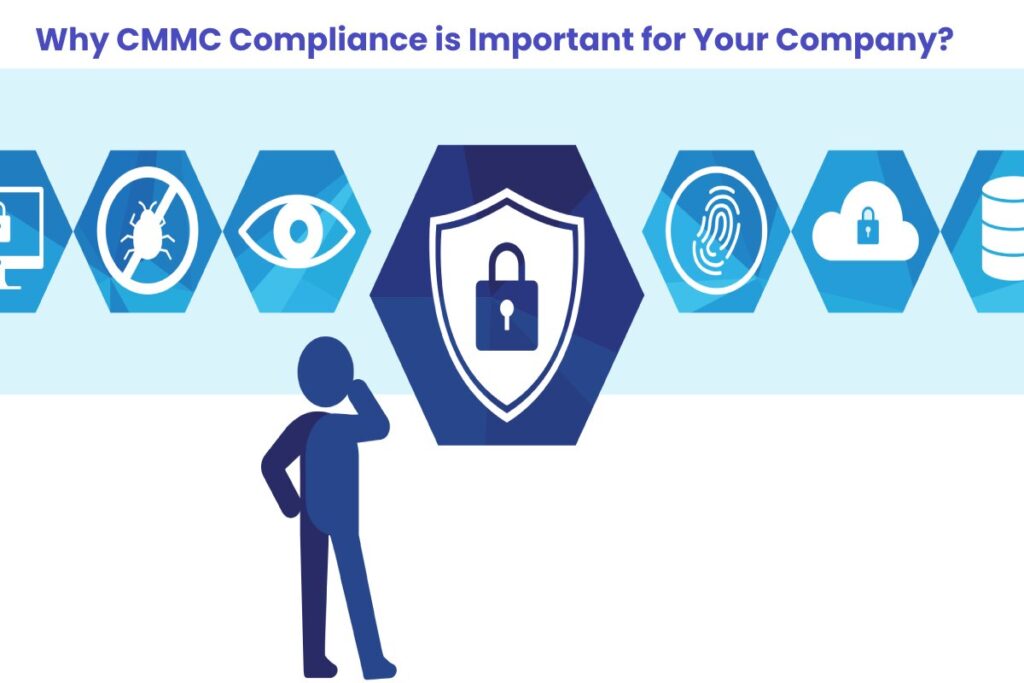Setting up a wireless internet connection for your business can help your employees and customers access and use various vital internet features. However, opening a new network also potentially exposes you to hackers and other potentially dangerous situations. Thankfully, CMMC compliance testing can help make this process smoother and minimize any serious risks and dangers.
Why Online Security is So Important for Your Business?
If you don’t take the time to address your online security, you could be opening up yourself and your customers to hacking problems. These online security issues may also be compounded by inappropriate customer and employee activities. Just a few dangers you may experience include:
- Hacking Attempts: Poor internet security may open you and your customers to hacking attempts. Yes, even your customers may get hacked if they use your wireless network without security measures.
- Phishing Scams: Phishing scams may use open internet sources like those at your business to target various competitors and potentially cause serious legal ramifications for you and your company.
- Illegal Customer Activity: Some customers may use your wireless internet as a base for various illicit activities. This may cause authorities to track these activities at your facility, resulting in some legal complications.
- Problematic Employee Behavior: Even if your employees don’t do anything specifically illegal, they may accidentally invite hackers and others onto your online network via gaming services they play while on break.
All of these problems make high-quality online security vitally crucial for your protection. However, you also need to get CMMC compliance to improve your overall safety. Doing so can help provide short- and long-term protection that minimizes your risks.
Steps That Help With CMMC Compliance
Before discussing necessary compliance steps, it is essential to ask, “what is a CMMC compliance?” CMMC compliance helps ensure that your system follows specific security guidelines that minimize potential hacking dangers and risks. Getting compliant requires following a few steps to enhance your internet’s overall safety and minimize hacking risks. These steps are:
- Assess CUI Environment: Your compliance testing starts by ensuring your CUI information is stored within the 800-171 requirements. This process includes checking things like your operating system, how it connects to the cloud, and many other steps.
- Document Finding: Your findings will store in a System Security Plan and Plans of Action document during your compliant testing. Compliance professionals will make sure your results are safe and will work to ensure that they meet all quality and safety guidelines.
- Test Your System: Compliance experts then calculate your compliance score using SSP and submit it to the federal government. After this step, you can remediate or change the requirements that you don’t satisfy to ensure that you follow all compliance guidelines.
- Monitor Your Organization: Compliance specialists will occasionally monitor your organization and help you update your documentation to reflect your security level. They’ll help you understand these guidelines and work towards meeting them as efficiently as possible.
The United States Justice Department suggests these steps ensure more robust and safer internet connections. Even if you open up a small coffee shop with an open internet server for your customers, taking these safety steps will minimize your risks. They’ll also ensure that your information and customers stay safe from unnecessary hacking situations.
You Deserve Internet Safety
No matter your business, you deserve a safe operating environment for your internet needs. By working with a CMMC compliance professional, you can better address any concerns and ensure that you meet any complex demands. You can also provide your customers and employees with a better internet environment.


